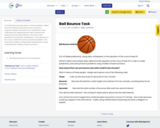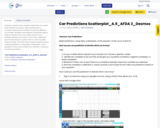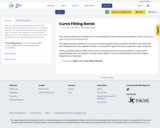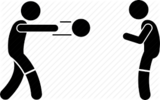
Curve of Best Fit 1 With Desmos Mathematics Instructional Plan
- Subject:
- Algebra I & II
- Mathematics
- Material Type:
- Lesson Plan
- Provider:
- VDOE
- Author:
- VDOE
- Date Added:
- 10/07/2024

Curve of Best Fit 1 With Desmos Mathematics Instructional Plan

Curve of Best Fit 2 Mathematics Instructional Plan

We're Playing Basketball Task Template and Student Version of Task

In the Ball Bounce task, teams of three students collect real-time ball bounce data for two minutes to organize, display and use to form predictions. After collecting and organizing their data, students first observe how the data behave. Then they make predictions using data, scatterplots, or the equation of the curve of best fit to solve a
practical problem. This task offers students collaborative experience in using mathematical models of linear functions.

Students research two variables about the car model they intend to purchase. They use Desmos to compare these same variables across five different car models. Students use analysis of bivariate data in order to decide which car makes sense to buy. Students prepare and share a summary statement and include desmos screen shots in order to justify their purchase. This task offers students experiences in making predictions, using data, scatterplots, or the equation of the curve of best fit for decision-making in a practical problem.

With your mouse, drag data points and their error bars, and watch the best-fit polynomial curve update instantly. You choose the type of fit: linear, quadratic, cubic, or quartic. The reduced chi-square statistic shows you when the fit is good. Or you can try to find the best fit by manually adjusting fit parameters.

Developing a curve of best fit for dataMathematics Instructional Plans (MIPs) help teachers align instruction with the 2016 Mathematics Standards of Learning (SOL) by providing examples of how the knowledge, skills and processes found in the SOL and curriculum framework can be presented to students in the classroom.

Determining a curve of best fit Mathematics Instructional Plans (MIPs) help teachers align instruction with the 2016 Mathematics Standards of Learning (SOL) by providing examples of how the knowledge, skills and processes found in the SOL and curriculum framework can be presented to students in the classroom.

Just in Time Quick Check Curve of Best Fit

This is a hands on lesson to get students up and moving while also learning about calculating quadratic regressions. It incorporates techology such as DESMOS and/or CODAP to get students comfortable with these programs and loooking at data in different ways.